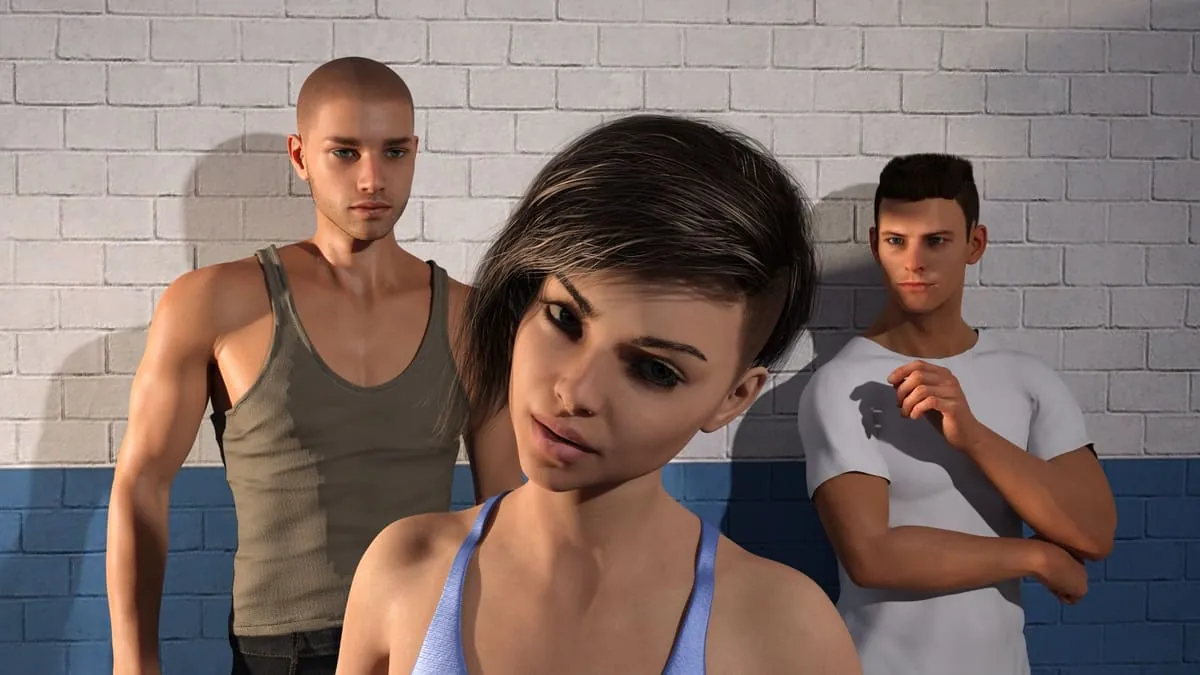
Play Thirty Days
Thirty Days review
Explore the immersive world and multiple endings of Thirty Days visual novel
Thirty Days is a captivating choice-driven visual novel that offers players a unique experience with every playthrough. Centered around spending a month with 18-year-old fraternal twins, Alex and Kayla, this game challenges you to shape their journey through decisions that influence their future. Whether you choose to nurture, romance, or challenge them, every choice leads to different story paths and endings. In this article, we’ll dive deep into the gameplay, characters, and how to make the most of your Thirty Days adventure.
Understanding Thirty Days: Gameplay and Story Dynamics
Ever found yourself playing a story-driven game where your choices feel… well, pointless? 🤔 Like the game is just politely nodding along before continuing down its pre-set path? I know I have, and it’s a big reason why the Thirty Days game felt like such a breath of fresh air. This isn’t a story you simply watch; it’s a story you build, brick by emotional brick, with every single decision you make.
At its heart, Thirty Days is an experience about connection and consequence. You step into the shoes of a relative or close friend arriving to spend a month with two sheltered teenagers, Alex and Kayla. Your mission? To be the guiding presence in their lives during a pivotal summer. The choice-driven gameplay is the very fabric of the experience, transforming a simple narrative into a deeply personal journey. Let’s dive into what makes this visual novel so unforgettable. 🏡
What Makes Thirty Days Unique Among Visual Novels? ✨
Most visual novels give you a single protagonist and a set path with minor variations. Thirty Days throws that playbook out the window. Its most groundbreaking feature is the ability to play as a family member or friend from the very start. Are you the cool aunt who breaks the rules? The strict uncle who values discipline? The cousin who feels more like a peer? This initial choice isn’t just cosmetic; it fundamentally reshapes your entire relationship with Alex and Kayla.
I remember my first playthrough. I chose to be the “family friend,” thinking I could be a neutral, fun presence. Boy, was I wrong! 🎯 That single decision colored every interaction. The twins reacted to my advice differently than they would have to a blood relative. A joke that would have landed from their cousin fell flat coming from me. It was my first real taste of the game’s depth. You’re not just making choices in the story; your primary identity is a choice that echoes throughout all thirty days.
The structure itself is a masterstroke. The 30-day timeline creates a tangible sense of urgency and progression. Each morning, you choose how to spend your time: do you focus on Alex, who might be struggling with confidence? Or Kayla, who is curious about the world beyond her home? This daily structure makes the Alex and Kayla story feel incredibly organic. You’re not just ticking off plot points; you’re living a summer with them, and the bonds you form feel earned.
How Choices Shape the Narrative Experience 🧭
If you think the visual novel choices in most games are obvious, prepare to be challenged. Thirty Days specializes in decisions that have no clear “right” answer. You’re not picking between “Good Karma” or “Bad Karma.” You’re navigating the messy, complicated reality of guiding two young adults.
The game’s choice-driven gameplay operates on two levels: the macro and the micro. The macro choices are the big, dramatic moments—do you encourage Kayla to take a risky opportunity, or do you urge caution? The micro choices are just as vital. It’s in the little things: what you choose to talk about over breakfast, which hobby you suggest for a bored Alex, or whether you share a personal story from your own past. These small moments build trust, and trust unlocks new dialogue options and story branches later on.
Pro Tip: Don’t try to “game” the system on your first run. Play naturally, as you truly feel. The most rewarding endings often come from genuine, sometimes flawed, decisions.
This is where the magic of the multiple endings Thirty Days offers truly shines. In my second playthrough, I made a point of supporting Alex’s artistic side, which I’d neglected the first time. I was stunned to discover a completely new storyline where he opened up about his dreams of becoming an illustrator—a plot thread I never knew existed! This is the core of the game’s immense replayability in Thirty Days. You’re not just reloading a save to pick a different dialogue option; you’re embarking on a wholly new narrative path, discovering facets of the characters you never knew were there.
Exploring Multiple Perspectives and Characters 👥
The true genius of the Thirty Days game is that it understands there is no single “correct” way to be a positive influence. By allowing you to play as a family member Thirty Days from different relational roles, the game forces you to consider problems from new angles. The challenges Alex and Kayla face don’t change, but the solutions available to you absolutely do.
Let’s break down how these perspectives can alter your experience. The table below compares the unique narrative lenses you can adopt:
| Character Role | Unique Narrative Perspective | Example Story Impact |
|---|---|---|
| The Aunt/Uncle | Blends parental authority with familial warmth. You can set rules but also offer a safe space away from direct parental pressure. | You might have the authority to grant permission for a major trip, a power other roles lack. |
| The Cousin | Acts as a peer and a confidant. The twins are more likely to share secrets and ask for advice on personal matters. | You could be the first to learn about a secret relationship or a hidden fear, unlocking intimate, personal story arcs. |
| The Family Friend | An outsider’s perspective. You bring fresh ideas and are seen as less “judgmental,” but you must work harder to earn deep trust. | Your suggestions about the “outside world” carry a unique weight of novelty and excitement. |
🔄 Playing through each role isn’t just about seeing new content; it’s about assembling the complete picture of the Alex and Kayla story. You’ll learn things as the cousin that you’d never hear as the uncle, and vice versa. This design is what creates such powerful replayability in Thirty Days. It’s like piecing together a beautiful, complex mosaic of a family’s summer.
The heart of this experience is, without question, the twins themselves. The Alex and Kayla story is a nuanced portrayal of two individuals reacting differently to their sheltered upbringing. One might crave adventure, while the other finds comfort in routine. Your role is to listen, to guide, and to ultimately help them find their own paths. The multiple endings Thirty Days provides are a direct reflection of your success—or failure—in understanding and supporting them.
So, as you prepare to start your own thirty days, remember: there are no perfect playthroughs, only honest ones. Embrace your role, follow your instincts, and don’t be afraid to start over. A completely different story, with new joys and heartbreaks, is always waiting for you just one click away. 🚀
Thirty Days offers a rich, interactive experience where every decision you make influences the story and the characters’ futures. By exploring different perspectives and making varied choices, you unlock a wide range of endings and storylines, making each playthrough fresh and engaging. Whether you want to nurture, challenge, or form bonds with Alex and Kayla, this game provides a compelling narrative playground. Dive into Thirty Days today and discover the impact of your choices over a transformative month.






















